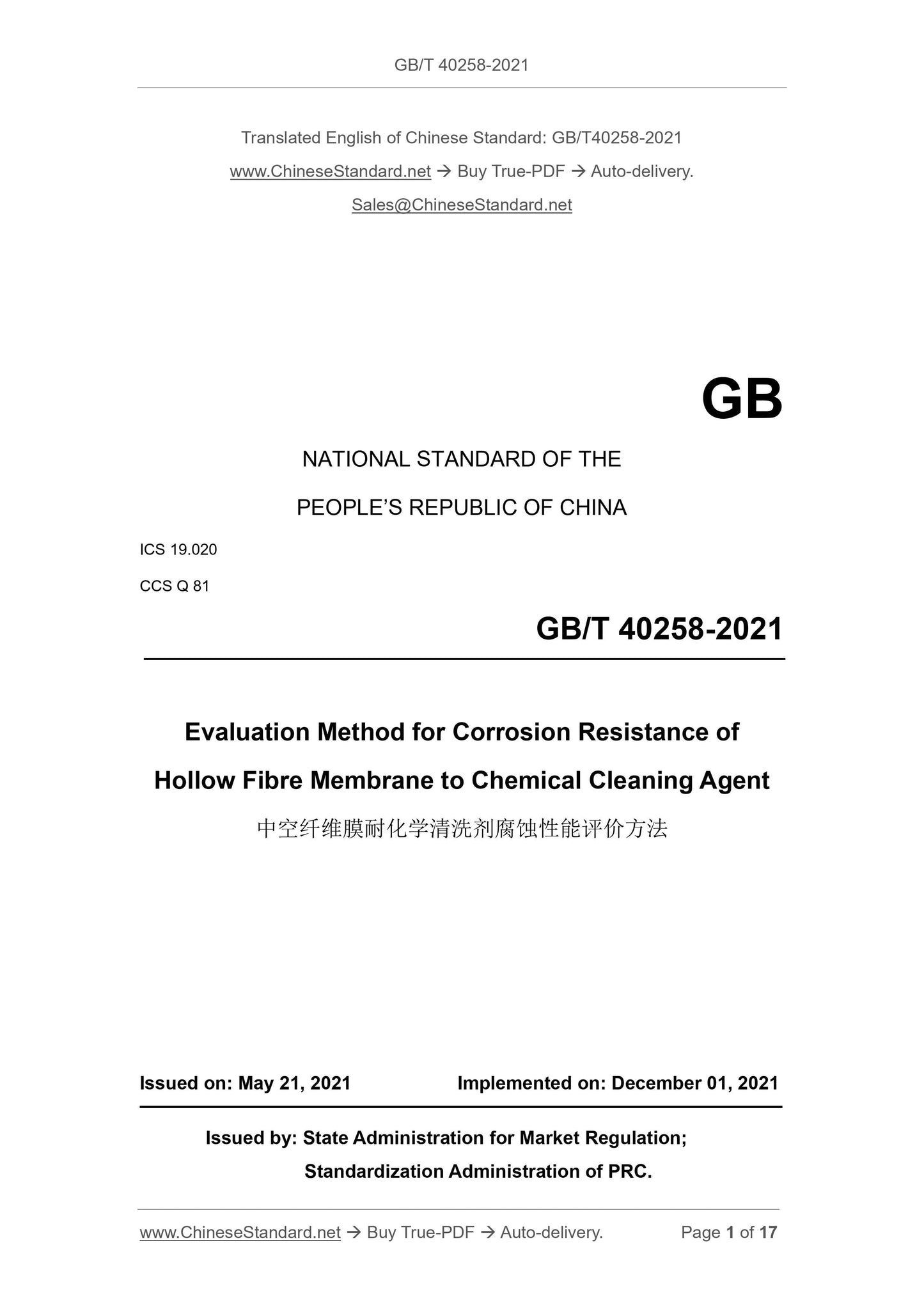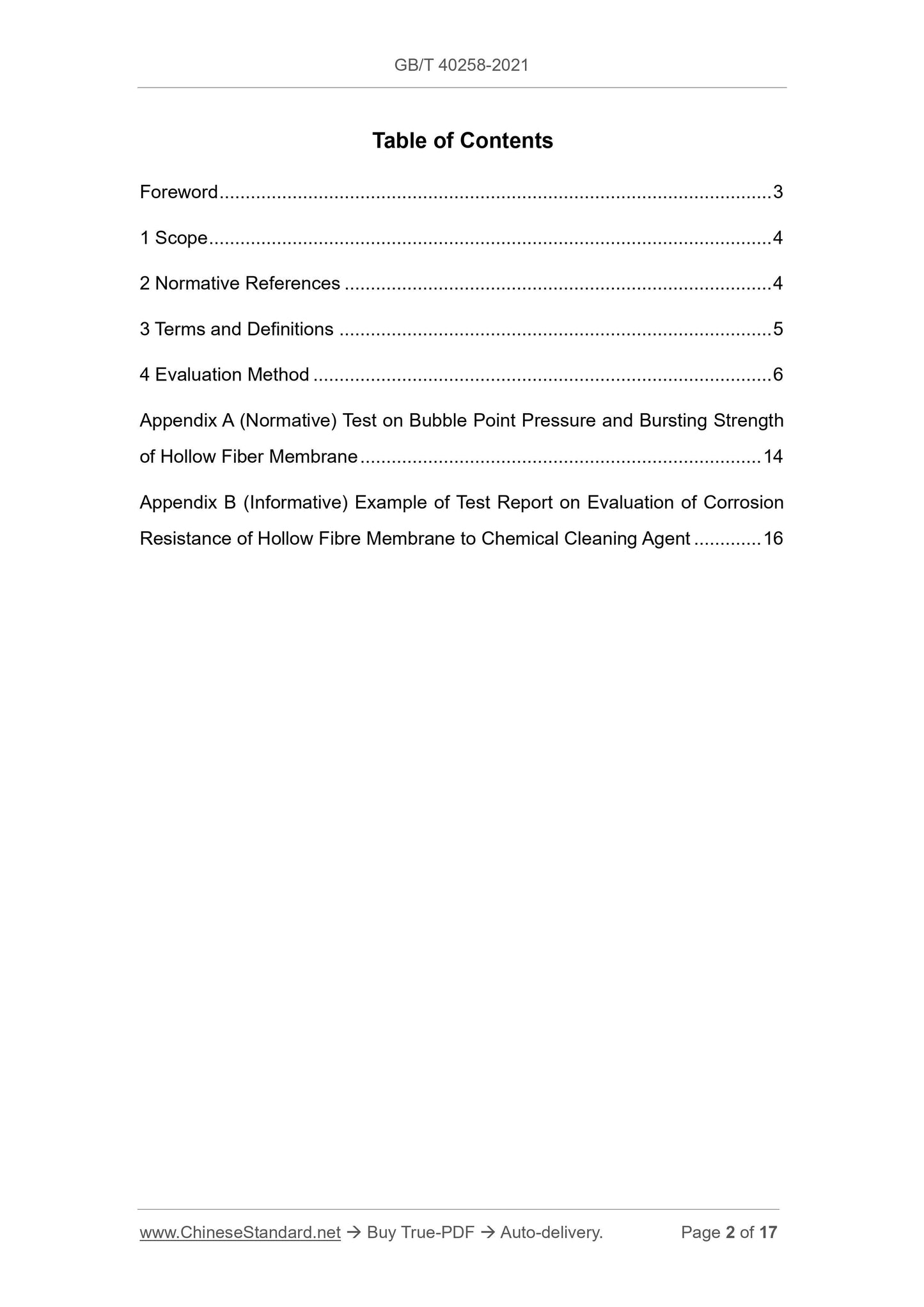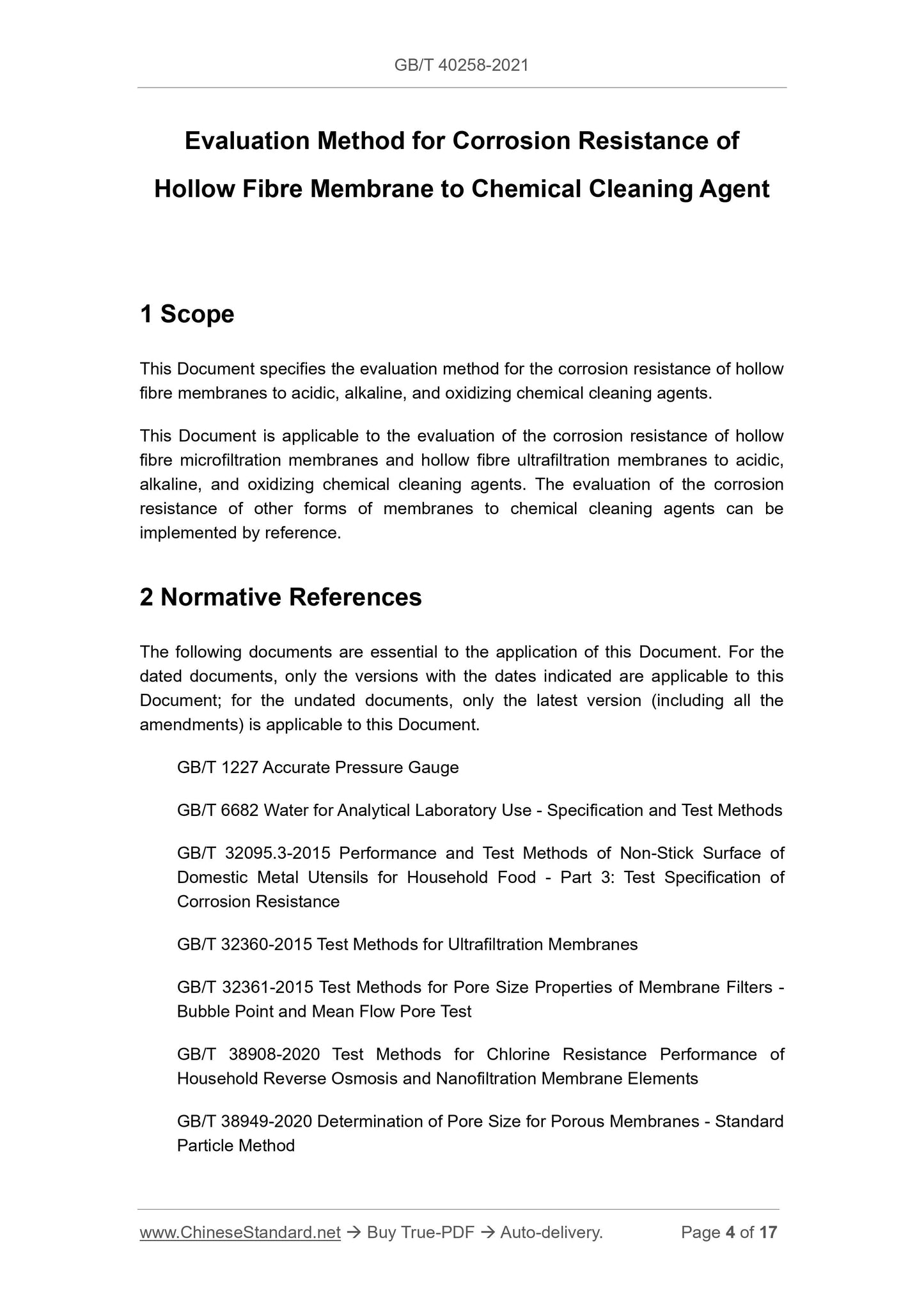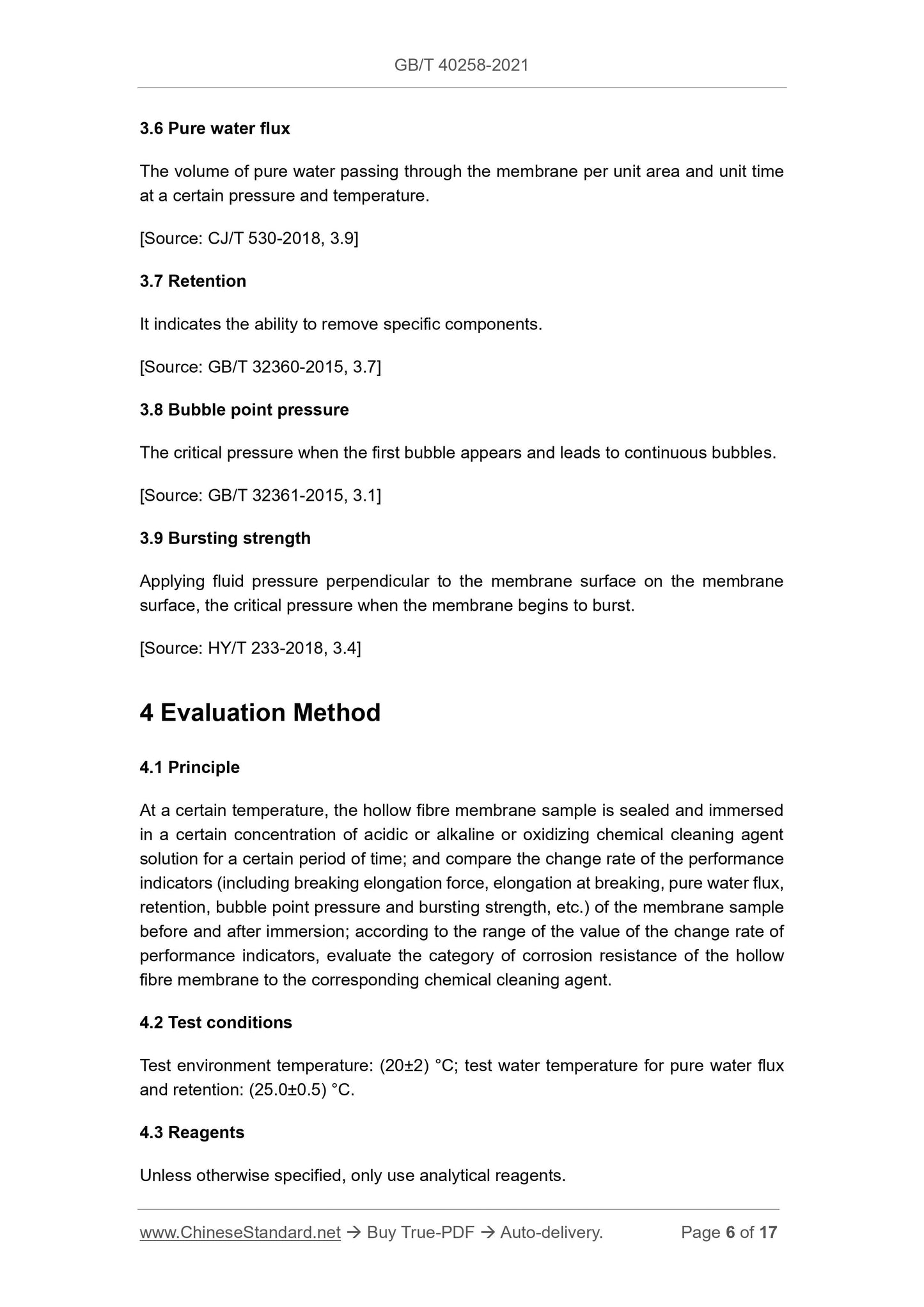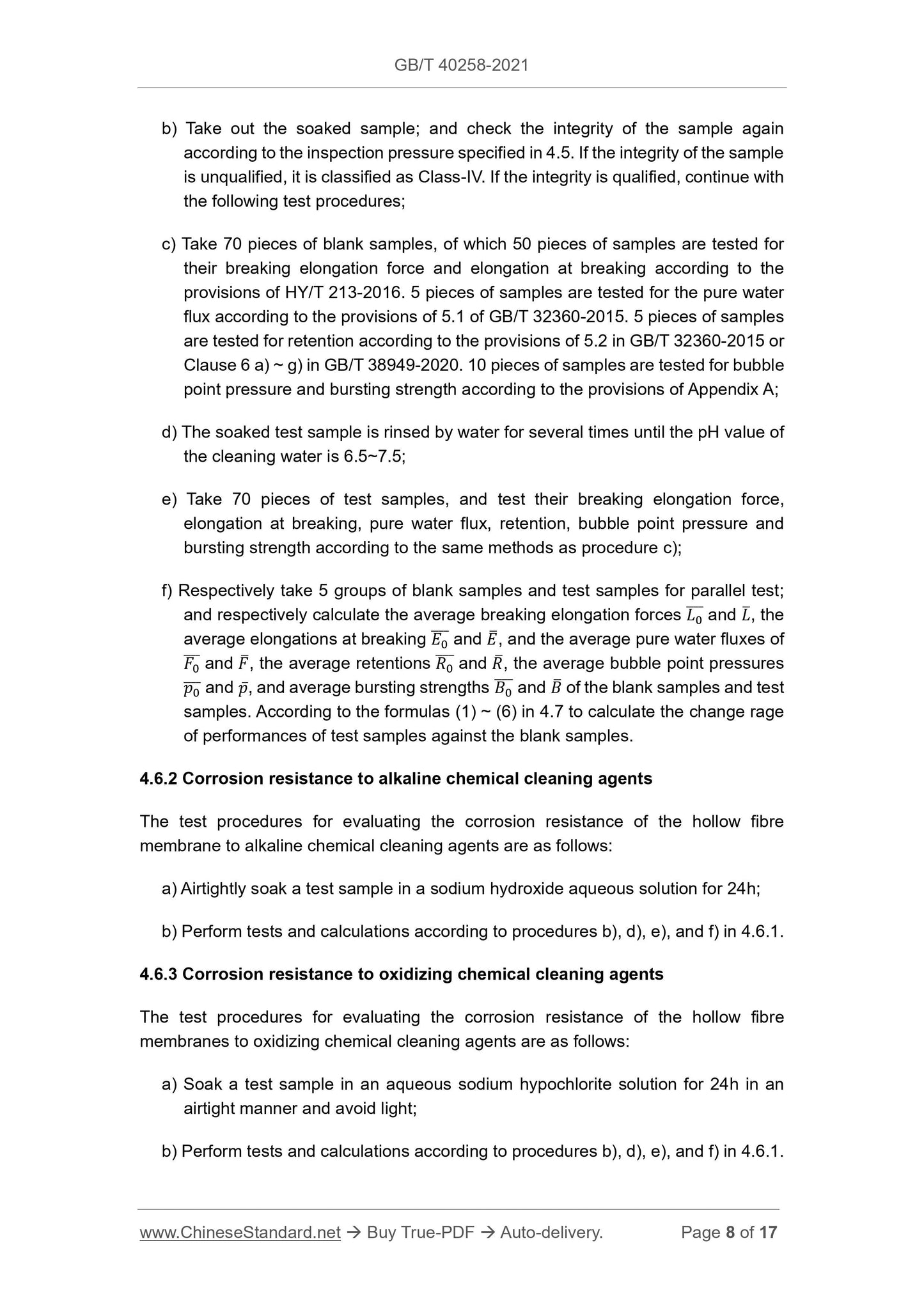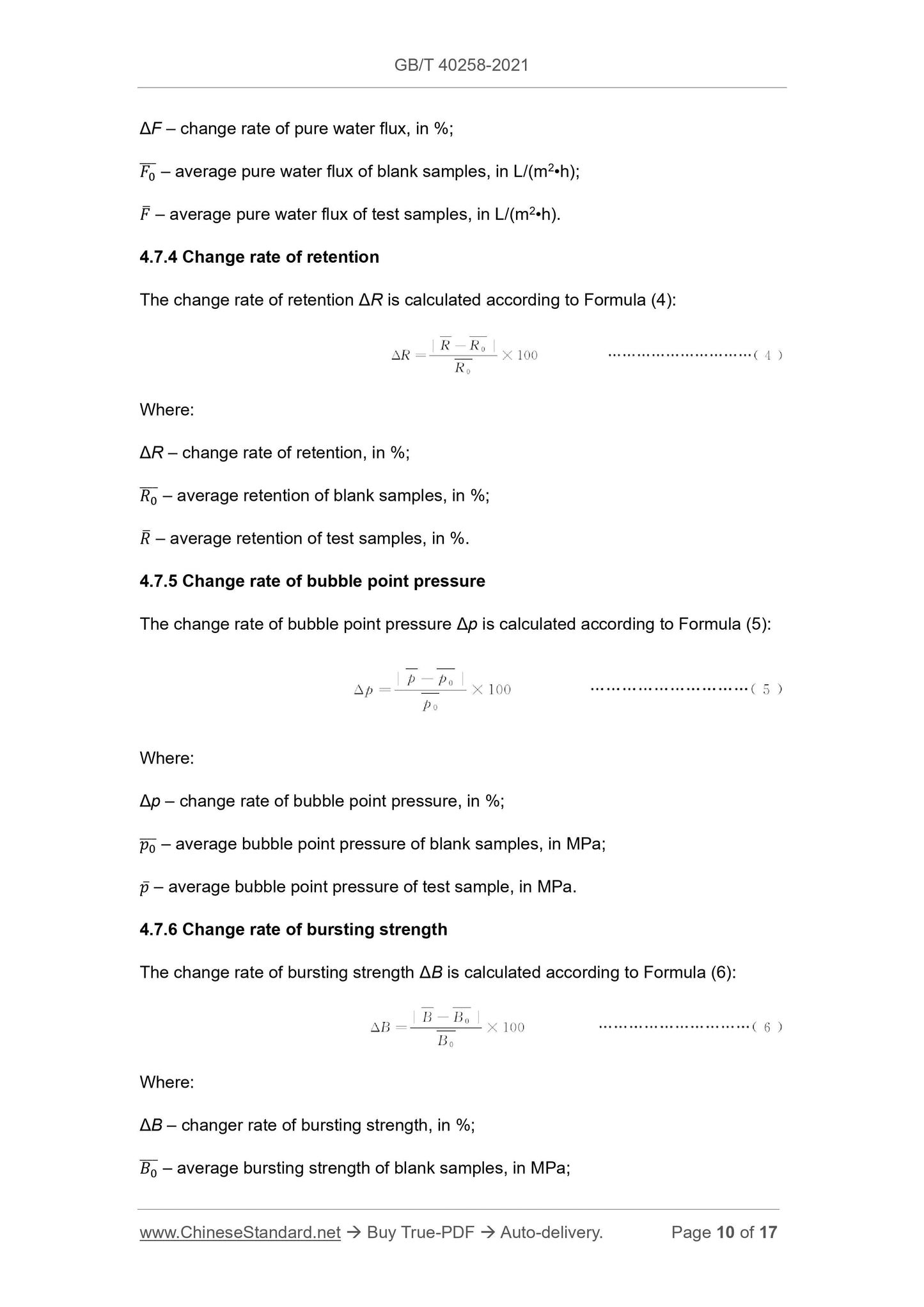1
/
of
6
www.ChineseStandard.us -- Field Test Asia Pte. Ltd.
GB/T 40258-2021 English PDF (GB/T40258-2021)
GB/T 40258-2021 English PDF (GB/T40258-2021)
Regular price
$205.00
Regular price
Sale price
$205.00
Unit price
/
per
Shipping calculated at checkout.
Couldn't load pickup availability
GB/T 40258-2021: Evaluation method for corrosion resistance of hollow fiber membrane to chemical cleaning agent
Delivery: 9 seconds. Download (and Email) true-PDF + Invoice.Get Quotation: Click GB/T 40258-2021 (Self-service in 1-minute)
Newer / historical versions: GB/T 40258-2021
Preview True-PDF
Scope
This Document specifies the evaluation method for the corrosion resistance of hollowfibre membranes to acidic, alkaline, and oxidizing chemical cleaning agents.
This Document is applicable to the evaluation of the corrosion resistance of hollow
fibre microfiltration membranes and hollow fibre ultrafiltration membranes to acidic,
alkaline, and oxidizing chemical cleaning agents. The evaluation of the corrosion
resistance of other forms of membranes to chemical cleaning agents can be
implemented by reference.
Basic Data
| Standard ID | GB/T 40258-2021 (GB/T40258-2021) |
| Description (Translated English) | Evaluation method for corrosion resistance of hollow fiber membrane to chemical cleaning agent |
| Sector / Industry | National Standard (Recommended) |
| Classification of Chinese Standard | Q81 |
| Word Count Estimation | 14,163 |
| Issuing agency(ies) | State Administration for Market Regulation, China National Standardization Administration |
Share
